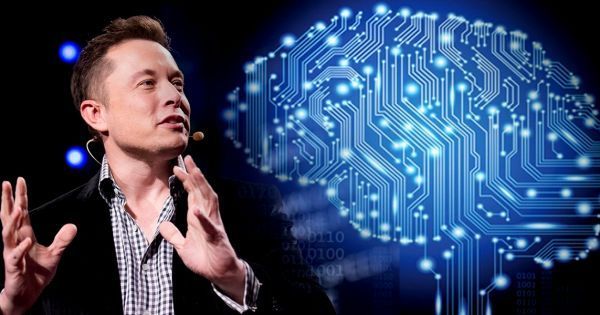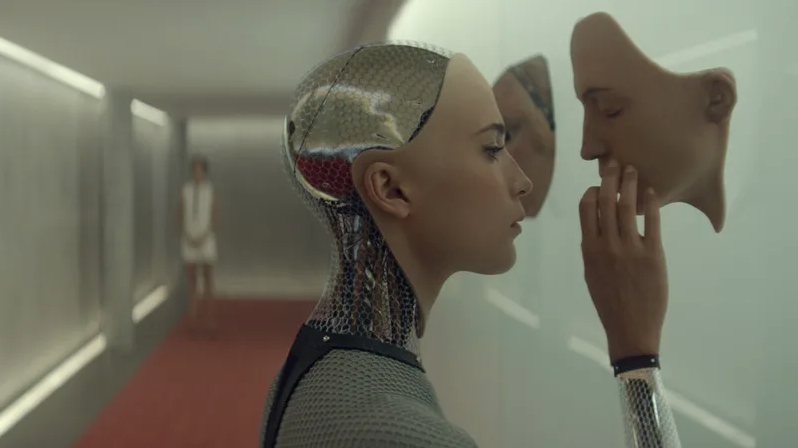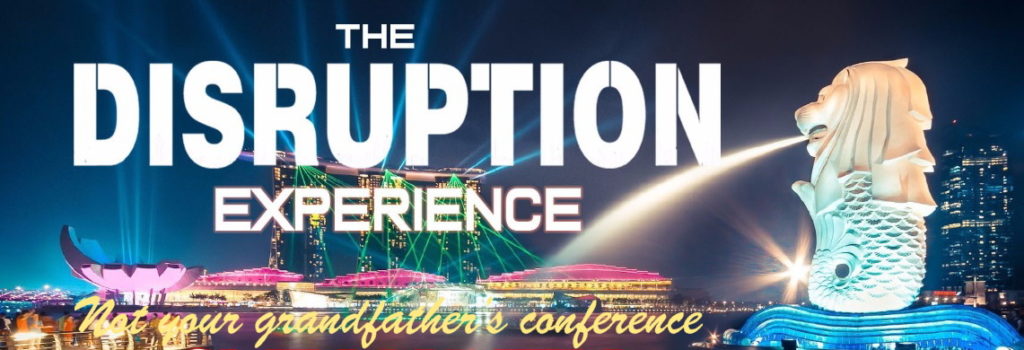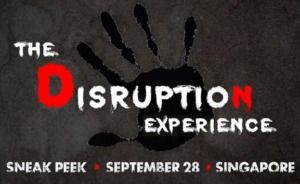What are the key driving forces shaping the emerging future of business meetings, events, and conferences?
The next five years promise to bring fundamental changes across society – from the clients we serve, to the technology we use, and the needs and priorities of business – literally everything is “up for grabs”. At the same time, societal shifts, changing delegate and employee expectations, economic shifts, and financial uncertainty will all add to this mix – creating complexity, new opportunities, unexpected challenges, and a pressure to stay ahead of the game in spotting what’s next. Here we outline 20 developments that will become more prominent and potentially become major industry trends over the next five years.
- Conferences will have an increasingly interdisciplinary focus – In many sectors, participants will tire of hearing the same industry speakers and vendors saying roughly what they said last year! In the search for inspiration to maintain attendance levels, organizers will invite inspiring people from different fields, arts, science, music, business, education, or engineering to share their ideas with participants. The convergence, between people coming from different fields, will contribute to more creative solutions for the complex problems of the future of business.
- The Brexit Boom – Businesses the world over are struggling to understand what form the UK’s exit from the European Union might actually take – or if it will happen at all. Should it happen, the process might take five or ten years to complete fully. There is likely to be a high level of uncertainty and chaos. As the story continues to unfold there will be growing demand for events which help suppliers from and to the UK understand the latest picture and implications for their sector. For the meetings industry, the key here will be the ability to organise and promote relatively short, high quality, sector-specific events at speed.
- #metoo Charters — The meetings industry will take positive action in the wake of the harassment and assault cases made public across many sectors in 2017. Codes of conduct will appear covering behaviour at events, participants will be asked to sign these to confirm their adherence. Reporting of incidents will be made easier and more discreet, and offenders’ organizations will be notified immediately when such issues arise.
- Political Uncertainty – For the travellers to the US, uncertainty will continue over whether travel bans, or enhanced border vetting, will be in place for visitors from a range of countries. This may lead some organisers to locate global events in locations with no such restrictions.
- Smarter by Design – The of artificial intelligence (AI) in the sector will expand quite rapidly. From designing agendas, setting prices, and targeting potential attendees through to customer service chatbots, determining best fit locations, matchmaking people at events, and providing back-up content and fact checking of presentations, AI tools will become a feature across the entire industry value chain. In a very human business such as the events sector, it seems likely that AI will be used to free up time for value adding tasks rather than reduce headcounts.
- Business Model Experimentation – In a world where new charging models are proliferating, there will be a growing pressure on events to bring greater creativity to bear. From paying based on the perceive value and seat auctions through to pay per session and results based charging – the sector will be exploring a range of attendee payment ideas.
- Silent Conferences — Participants will be able to tune in to every parallel session via their personal devices and listen through their headphones from wherever they are in a venue. So, if the current session doesn’t appeal, you can simply switch to listen to or watch another parallel session another without leaving your seat.
- Real-Time Conference Agendas — Participants will be able to use meeting apps to schedule impromptu sessions held in any available space — coffee bars, lobbies, exhibition floors, even car parks. The speaker will talk into a microphone attached to their own smartphone and have the talk broadcast to those who tune in to that particular channel. Attendees will be able to view presentation slides and hear the speaker via their own device and headphones. So, no matter how noisy the background, the audience will be able to understand you perfectly clearly.
- Next Generation Meeting Scheduling — The intelligent assistants (IA) on our phone, or on the meeting app, will book appointments and meeting locations for us based on the types of people we say we want to meet. The IA will scan the attendee list, find the people who fit the criteria we’ve defined, and then contact their IA to request and set-up meetings.
- Stress Centres — concerns over our mental wellbeing are rising across society and workplace stress is reaching epidemic levels in some sectors. Events will start to include facilities where participants can talk discretely to counsellors and therapists about their issues.
- Thinking Hubs — Meeting venues will have interactive technology that will enable creative thinking and idea testing. Interactive technologies such as Virtual Reality (VR) or Augmented reality (AR) will allow participants to visualize data or ideas developed in a workshop session in a more tangible way. Participants will be able to test different ideas in VR/AR software and compare their possible outcomes to make better decisions.
- Integrated Events Apps — Users will not have to download individual APPs for each event, we will integrated systems emerge that present content for multiple events – these may even become standard features on many smartphones. App developers will create more cohesive systems that merge the information and presentations all the different events that sign up to use them. Users will have the opportunity to browse for the most interesting and useful information across a range of events and conferences – perhaps making micro-payments to access content for the events they didn’t attend.
- Digital Twins — Early adopters of technology could soon be able to send a digital stand-in to attend face-to-face conferences. The participant’s digital twin would be a software incarnation of the person embodied (or not) by a hologram or device that can see, hear, and observe the event in real time. The digital twin could engage with other participants in virtual space or on social media during the event, leading up to scheduled face to face meetings with interesting contacts at later points in time.
- Robot Realms – Events will make greater use of robots as mobile customer service assistants, kitchen staff, baristas, waiting staff, security guards, and porters. We’ll also see more robots featuring presentations and even delivering them. Within facilities we might see drones capturing videos of the sessions, transporting goods, and even moving people between sessions.
- Paradise Unplugged – Some meetings will be elevated to a luxury experience by adopting technology-free policies that demand unplugging, disconnecting, powering down, and “off-gridding” for all participants. Events will set a tone of intimacy and authenticity by discarding the free wi-fi and discouraging conference hashtags, for example. The venues would provide a facility at check in where participants can drop off their devices for the day and unplug, putting a total focus on the experience at hand.
- Cryptoculture — With the rising profile of digital currencies like Bitcoin, the next five years could require the meetings sector to adapt to customers interested in paying with cryptocurrencies. Being prepared to accept payments via Bitcoin and other digital currency would be an important step; there may also be new risks at hand when it comes to having anonymously paid fees, which is the nature of Bitcoin but unconventional in terms of event planning. There is likely to be a massive expansion of events about and related to cryptocurrencies as investment interests grow and the public becomes more and more curious about the potential of cryptocurrencies. A growing number of industry conferences will also look to add content about the potential impact and use of cryptocurrencies in their sector.
- Circular Economies and Zero Waste — The meetings and conference industry will come under growing pressure and take greater action to alleviate food, energy, and water waste. Scientific studies have shown that the earth’s ecosystems are weakening due to inefficiencies in current economic structures and distribution systems. So, for example, millions go hungry while fresh food is routinely discarded. Events and meetings that put into practice the principles of circular economies and zero waste, philosophies that encourage reuse and discourage overconsumption, might have a powerful role to play in the future where natural resources, even food, could be in short supply.
- The Replaced — As the automation of work and jobs progresses as an economic force, it is possible that there will be a rise in the number of technologically unemployed people. Events and meetings aimed at this audience might emerge as an opportunity for the meetings sector. Past employers, governments, other sponsors, and even the individuals themselves might pay for seminars, conferences, education sessions, and certification courses aimed at counselling, reskilling, and retraining the replaced. Indeed, these could become regular events in many local communities.
- Big Brother — Events that gather large numbers of participants could become attractive to proponents of the growing Internet of Things (IoT) and smart city movement. Attendees of large events might earn rewards, discounts, or actual money for agreeing to use tracking devices during business conventions or meetings. Attendee data would provide key insights to exhibiters, and non-participating marketers, for example those aiming at the business traveller. Marketers will place ever-greater value on knowing how participants spend their time, which stands they visit, what they look at on specific exhibits, who they talk to, and how long for. Of course, this might all seem very intrusive and, so it would need to be the choice of the individual attendee as to whether they were tracked or not. For event venues, large exhibition spaces might provide the perfect venue for IoT vendors to set up demonstrations and smart city simulations.
- Enhanced-Friendly – People are beginning to pursue a range of brain and body enhancements – chemical, genetic, physical, and electronic. From nootropic attention stimulating drugs and supplements through to body strengthening exoskeletons, and genetic modification, the sci-fi notion of “bodyhacking” is becoming a reality. Event planners will increasingly need to consider the needs of these enhanced visitors. As biohacking and bionics go from fringe to mainstream, how will meeting planners adapt to dealing with customers, colleagues, and vendors who are partially enhanced? Within the next five years, various forms of biotech implants could become more normalized, giving some individuals superhuman hearing, vision, or memory. As the sensory spectrum is expanded, will meetings be expected to accommodate the needs of the enhanced human?
The next five years could see more dramatic change taking place in the meetings sector than we have seen since its emergence. A powerful combination of economic, social, technological, and environmental factors will create new opportunities and challenges and force the sector to undertake a fundamental rethink of literally every aspect of what it does. Some will act fast to be ahead of the curve and use these impending changes as an opportunity to innovate in advance of the competition, others will inevitably wait until they are forced to by customers and competitive pressures. The choice over when to act is down to the individuals involved – but panic and crisis driven strategies rarely provide sustainable business advantage.
Other than technology, which areas of the economy, life, and society might have the biggest future impact on the events and meetings industry?
How might the job roles in your organization be impacted by some of the 20 trends described above?
What might be some of the critical skills required to ensure a viable future for businesses in the meetings and conference sector?
The authors are futurists with Fast Future — a professional foresight firm specializing in delivering keynote speeches, executive education, research, and consulting on the emerging future and the impacts of change for global clients. Fast Future publishes books from leading future thinkers around the world, exploring how developments such as AI, robotics, exponential technologies, and disruptive thinking could impact individuals, societies, businesses, and governments and create the trillion-dollar sectors of the future. Fast Future has a particular focus on ensuring these advances are harnessed to unleash individual potential and enable a very human future. See: www.fastfuture.com
Rohit Talwar is a global futurist, award-winning keynote speaker, author, and the CEO of Fast Future. His prime focus is on helping clients understand and shape the emerging future by putting people at the center of the agenda. Rohit is the co-author of Designing Your Future, lead editor and a contributing author for The Future of Business, and editor of Technology vs. Humanity. He is a co-editor and contributor for the recently published Beyond Genuine Stupidity – Ensuring AI Serves Humanity and The Future Reinvented – Reimagining Life, Society, and Business, and two forthcoming books — Unleashing Human Potential – The Future of AI in Business, and 50:50 – Scenarios for the Next 50 Years.
Steve Wells is an experienced strategist, keynote speaker, futures analyst, partnership working practitioner, and the COO of Fast Future. He has a particular interest in helping clients anticipate and respond to the disruptive bursts of technological possibility that are shaping the emerging future. Steve is a contributor to the recently published Beyond Genuine Stupidity – Ensuring AI Serves Humanity and The Future Reinvented – Reimagining Life, Society, and Business, co-editor of The Future of Business, and Technology vs. Humanity. He is a co-editor and contributor to two forthcoming books on Unleashing Human Potential – The Future of AI in Business, and 50:50 – Scenarios for the Next 50 Years.
Alexandra Whittington is a futurist, writer, Foresight Director of Fast Future, and a faculty member on the Futures program at the University of Houston. She has a particular expertise in future visioning and scenario planning. Alexandra is a contributor to The Future of Business, the recently published Beyond Genuine Stupidity – Ensuring AI Serves Humanity and The Future Reinvented – Reimagining Life, Society, and Business. She is also a co-editor and contributor for forthcoming books on Unleashing Human Potential – The Future of AI in Business, and 50:50 – Scenarios for the Next 50 Years.
April Koury is a foresight researcher, writer, and the Publishing Director of Fast Future. She has worked on a range of foresight initiatives including society and media in 2020, emerging economies, and the future of travel, tourism, and transportation. April is a contributor to the recently published Beyond Genuine Stupidity – Ensuring AI Serves Humanity and The Future Reinvented – Reimagining Life, Society, and Business and a co-editor of The Future of Business, and Technology vs. Humanity. She is a co-editor and contributor to two forthcoming books on Unleashing Human Potential – The Future of AI in Business, and 50:50 – Scenarios for the Next 50 Years.
Helena Calle is a researcher at Fast Future. She is a recent graduate from the MSc. program in Educational Neuroscience at Birkbeck, University of London, and has eight years of international experience as a teacher, teacher trainer, pedagogic coordinator, and education consultant. Helena coordinates Fast Futures’ growing research on the future of learning.












 For me, Smart Contracts are one of the most exciting and potentially explosive opportunities. As a groupie and cheerleader, I am not alone. Catering to the Smart Contract community is rapidly becoming a big business. Until this week, I thought it was the conference venue that yielded the biggest thrills. That is, until I learned about the Disruption Experience…
For me, Smart Contracts are one of the most exciting and potentially explosive opportunities. As a groupie and cheerleader, I am not alone. Catering to the Smart Contract community is rapidly becoming a big business. Until this week, I thought it was the conference venue that yielded the biggest thrills. That is, until I learned about the Disruption Experience… The Disruption Experience team is populated by blockchain developers, educators and trainers who take issue with existing events that focus on monetization. The purity of intention was overrun by greed. And so, they set out to form an event with a more altruistic purpose: Build technology, relationships, mechanisms and educational tools that better mankind. The focus at this event and the conferences that follow is to educate, expose and innovate. The focus is squarely on disruptive technology.
The Disruption Experience team is populated by blockchain developers, educators and trainers who take issue with existing events that focus on monetization. The purity of intention was overrun by greed. And so, they set out to form an event with a more altruistic purpose: Build technology, relationships, mechanisms and educational tools that better mankind. The focus at this event and the conferences that follow is to educate, expose and innovate. The focus is squarely on disruptive technology. Bitcoin and the blockchain were introduced simultaneously in a 2009 whitepaper. It’s a bit like explaining the engine and the automobile together—for the very first time. One is a technology with a myriad of applications and the potential to that drives innovation. The other is an app. Sure, it’s useful and important, but it’s just an app.
Bitcoin and the blockchain were introduced simultaneously in a 2009 whitepaper. It’s a bit like explaining the engine and the automobile together—for the very first time. One is a technology with a myriad of applications and the potential to that drives innovation. The other is an app. Sure, it’s useful and important, but it’s just an app. Likewise, 2019 is likely to be the breakout year for blockchain applications, careers, products and—perhaps most importantly—public awareness, understanding and appreciation. Just as motors and engines are not limited to automobiles, the blockchain has far more potential than serving as an engine for decentralized cash. It is too important to be just a footnote to disruptive economics. It will disrupt everything. And we are the beneficiaries.
Likewise, 2019 is likely to be the breakout year for blockchain applications, careers, products and—perhaps most importantly—public awareness, understanding and appreciation. Just as motors and engines are not limited to automobiles, the blockchain has far more potential than serving as an engine for decentralized cash. It is too important to be just a footnote to disruptive economics. It will disrupt everything. And we are the beneficiaries.
